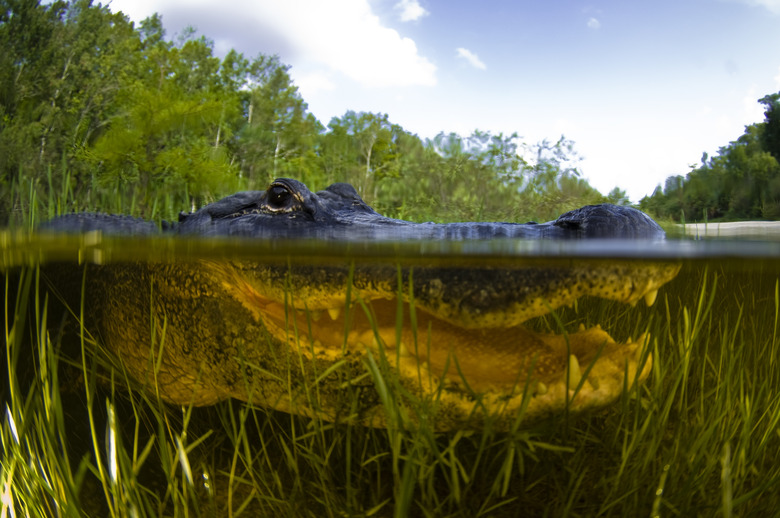Plant & Animal Adaptations In Swamps
Swamps are complex environments rife with diverse plant and animal life and unique demands for indigenous populations. Varied terrain creates challenges for creatures seeking to traverse the environment quickly, and the abundance of food means many animals must live in close proximity to deadly predators. To survive this dynamic environment both native plants and animals possess several adaptations not found anywhere else on the planet.
Oxygen Transportation
Oxygen Transportation
Many swamp plants are either partially or fully submerged underwater. This creates a difficult challenge for plants, which need oxygen to effectively undergo photosynthesis. To accommodate this, many swamp plants have hollowed stems that transport oxygen down to the roots where they are needed. Others have special air spaces in their roots called aerenchyma through which water-based oxygen ions can enter the roots and be used for survival.
Reduced Salt Intake
Reduced Salt Intake
Seaside swamps often have brackish water that is a mix between fresh and salt water. To combat fluctuating excesses in water's salt content plants often have salt-secreting glands that remove ingested salt particles. Other plants store excess salt in fleshy leaves and then periodically shed them. Some plants even saltwater proof themselves by developing a waxy covering over themselves which keeps out the unwanted salt. Often the adaptation used by the plant reflects how close the plant is to the ocean or how submerged it is under water.
Movement Methods
Movement Methods
Swamp animals need to be able to traverse water quickly to survive. Webbed feet are one common solution, as is a waterproof coat, which mammals such as beavers use to keep themselves warm. Other animals including a tiny insect called a Pond Skater uses paddle-like legs to glide over the surface of the water. These creatures essentially ride on the surface tension between the water and the air and this allows them to traverse large expanses of water extremely quickly.
Camouflage and Traps
Camouflage and Traps
Many animals in swamps employ camouflage to protect themselves and hunt their prey. Frogs for example will often submerge themselves in aquatic plants and leave only their eyes poking out above the water to watch for food. Other animals will burrow themselves in mud to stay cool and wait for passing prey. Large predators take advantage of these tactics as well. Alligators will dig through the clay or limestone beneath a body of water and then lie and wait in these traps for animals to come near or investigate.
References
Cite This Article
MLA
Kittmer, Lucas. "Plant & Animal Adaptations In Swamps" sciencing.com, https://www.sciencing.com/plant-animal-adaptations-swamps-8397188/. 13 March 2018.
APA
Kittmer, Lucas. (2018, March 13). Plant & Animal Adaptations In Swamps. sciencing.com. Retrieved from https://www.sciencing.com/plant-animal-adaptations-swamps-8397188/
Chicago
Kittmer, Lucas. Plant & Animal Adaptations In Swamps last modified March 24, 2022. https://www.sciencing.com/plant-animal-adaptations-swamps-8397188/
